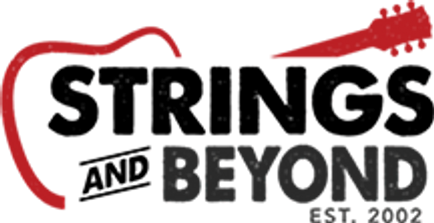Basic Guitar Chords for Beginners
Feb 19th 2024

Basic Guitar Chords for Beginners
If you’re just starting to learn the guitar, you might be dreaming of shredding like Angus Young or the late Eddie Van Halen. But even guitar virtuosos started with basic chords. Learning a few guitar chords is the gateway through which you can discover everything else that’s wonderful about your six-string.
What are the best guitar chords to start with? The first guitar chords you learn should meet one or both of the following qualifications:
1. They should be relatively easy to play.
2. They should be usable in a lot of songs.
Eventually, there will come a day for tackling the B7 and Ebmaj7#11 chords of the world. In the meantime, here are six guitar chords that beginners should know.

A Major
This is one of the easiest major chords to play, making it a great starting point. To play an A major on guitar, place your index finger on the second fret of the D-string, your middle finger on the second fret of the G-string, and your ring finger on the second fret of the B-string. Play strings 1-5 and skip the low E-string.
Pro Tip: You can mute the E-string by lightly touching it with your thumb.

D Major
The D major is another common chord in nearly all music genres. To play it, put your index finger on the second fret of the G-string, your middle finger on the second fret of the high E-string and your ring finger on the third fret of the B-string. Play strings 1-4 and skip the five and six strings.

E Major
Complete your first I-IV-V chord progression with an E major chord. Place your index finger on the first fret of the G-string, your middle finger on the second fret of the A-string and your ring finger on the second fret of the G-string. This is the first chord where you get to play all six strings!

G Major
Although it’s not as easy as the other chords on this list, the G major chord is used in so many songs — particularly as part of a G-C-D or D-G-A triad — that it is a need-to-know. Your index finger goes on the second fret of the A-string, your middle finger goes on the third fret of the low E-string and your pinky finger goes on the third fret of the high E-string. Optionally, you can also put your ring finger on the third fret of the B-string.

C Major
This is another good guitar chord to know because it completes your G-C-D progression. Place your index finger on the first fret of the B-string, your middle finger on the second fret of the G-string and your ring finger on the third fret of the A-string. Place strings 1-5 and skip the low E-string.

E Minor
Perhaps the simplest of the common guitar chords, you only need two fingers for this one. Your index finger goes on the second fret of the A-string and your middle finger goes on the second fret of the D-string. With E minor, you can play your first four-chord song using G-D-Em-C.

